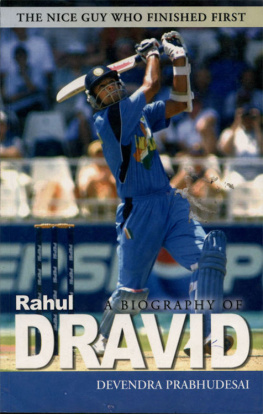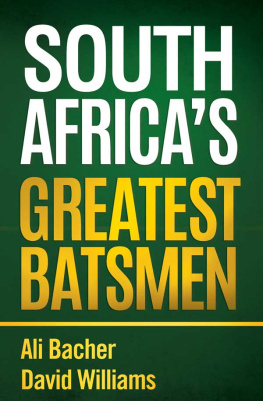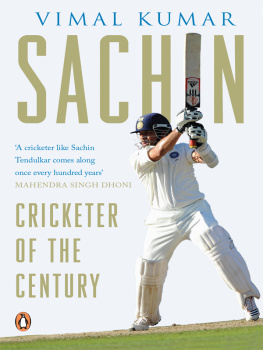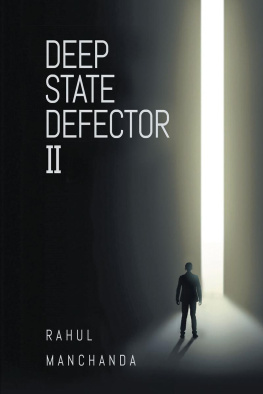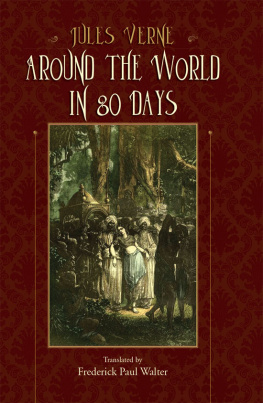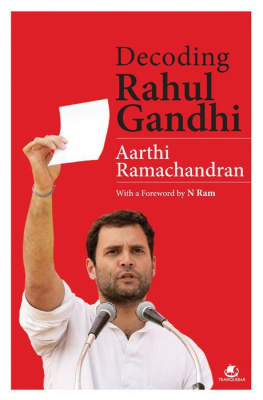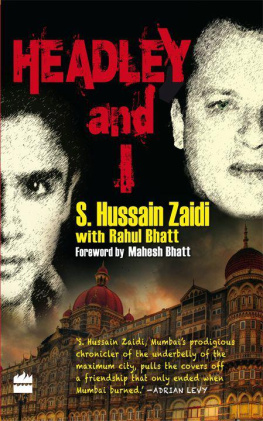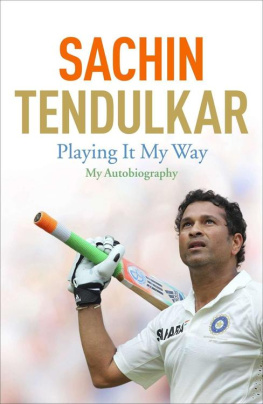THE NICE GUY WHO FINISHED FIRST is a remarkable story of Rahul Dravid's illustrious career in international cricket from 1996 to 2005a period wherein he excelled himself for his team and country.
It tells the tale of a young man who has succeeded in his chosen profession through an ardent faith in the three 'D's of dedication, discipline and determination.
The biography reconstructs the incidents and events that have contributed to making Rahul Dravid one of the greatest cricketers to have played the game, and an epitome of grace, humility and commitment to his team's cause. It is a tribute to a role model who has refused to rest on his laurels, and remains as intense in his quest for perfection as he was when he started out.
Rahul Dravid's moments of triumph are described, as also his trials and tribulations. The book narrates the epic battle, one that he eventually won, to break free of the stereotypes that haunted him in his early years at the international level. His efforts to emerge from the intimidating shadows cast by his teammates and contemporaries are illustrated in great detail. The book highlights the physical, mental and of course, technical attributes that have elevated Rahul to legendary status.
In this honest endeavour to recount the story of Rahul Dravid, the author is assisted by reminiscences from his mentors, seniors, teammates and even opponents, all of whom witnessed the making of a cricketing legend from close quarters. Then, there are the photographs, some of the best ever, which showcase, quite literally, the genius of one of India's all-time greats.
It is an engaging, absorbing and succinct read.
Devendra Prabhudesai (b.1976) is a cricket writer based in Mumbai. He is presently Manager Media Relations and Corporate Affairs, at the Board of Control for Cricket in India (BCCI).
He has also penned SMG: A Biography of Sunil Manohar Gavaskar (2009) and Cricket World Cup: Around the world in Seventy-and-a-half Days (2007).
To my grandparents
Copyright Devendra Prabhudesai 2005
First Published 2005
First in Rupa Paperback 2010
Published by
Rupa Publications India Pvt. Ltd.
7/16, Ansari Road, Daryaganj
New Delhi 110 002
Sales Centres:
Allahabad Bengaluru Chandigarh Chennai
Hyderabad Jaipur Kathmandu
Kolkata Mumbai
All rights reserved.
No part of this publication may be reproduced, stored in a retrieval system, or transmitted, in any form or by any means, electronic, mechanical, photocopying, recording or otherwise, without the prior permission of the copyright publishers.
Sponsored by Castrol Awards for Cricketing Excellence Celebrating the Best of Indian Cricket
Photographs by Kamal Julka, Prakeep Mandhani and Deccan Herald
Cover and book designed & typeset by
Arrt Creations
45 Nehru Apts, Kalkaji
New Delhi 110 019
Printed in India by
Gopsons Papers Ltd.
A-14 Sector 60, Noida 201 301
Sponsored by
Celebrating the Best of Indian Cricket
CONTENTS
PREFACE
Walter Reginald Hammond represented England in 85 Tests and scored 7,249 runs at an average of 58.45 in a glorious career that stretched from 1927-28 to 1946-47. Stupendous figures by all means. But unfortunately for him, whatever he did, his Australian contemporary Donald Bradman did better. In a career that began in 1928-29 and culminated in 1948, Bradman finished with 6,996 runs from only 52 Tests. He scored seven more hundreds than Hammond, and averaged the small matter of 99.94 runs per Test.
Cuthbert Gordon Greenidge, a destructive opening batsman from the Caribbean, made his Test debut against India at Bangalore in 1974-75, and scored 93 and 107. It was merely the beginning of a remarkable career. He had amassed 7,558 runs from 108 Tests at an average of 44.7, inclusive of 19 hundreds and 34 fifties, by the time he played his last Test in mid-1991. However, he was unable to command the adulation he deserved. It was just that his career coincided with that of a cricketer named Isaac Vivian Alexander Richards, who made his debut in the same Test as he and ended his career a few months after Greenidge did. 'King' Richards scored 8,521 runs from 121 Tests at an average of 50.23 and outshone almost all the batsmen of his era.
Gundappa Raghunath Viswanath was rated highly by cricket-lovers throughout his international career. His batsmanship won India many a memorable match at home and overseas in the 1970s and 1980s. He scored 6,080 runs from 91 Tests at 41.93. But his teammate and brother-in-law Sunil Gavaskar scored 1,305 more runs and 12 more hundreds, and averaged 53.51 from 85 Tests, besides establishing a plethora of records, in the same period.
The game of cricket has several written and unwritten rules. One of the unwritten ones is that cricketers find it difficult, in fact impossible, to emerge from the shadow of a contemporary or teammate who happens to be bestowed with that special title: 'Legend'.
But as is the case with every rule, there have been exceptions. We, cricket-lovers of the new millennium, are privileged to have an exceptional one in our midst.
Rahul Sharad Dravid spent the first few years of his international career in the shadows of a legend like Sachin Tendulkar, his much-loved teammate and former captain, a deity of the masses and darling of the media.
As the years passed, Rahul overcame several hurdles, some technical, others mental, to carve out a niche of his own. His tools were the same as Tendulkar's: self-belief, a passion for hard work, unwavering determination, and a fierce commitment to his team's cause.
Rahul has been one of the primary catalysts in the transformation of an 'under-performing' group of individuals into a competitive, fighting unit.
As the reader peruses the following pages, he will discover and also remember that the extraordinary achievements of the Indian team in the last few years have had one common and prominent factor.
Devendra Prabhudesai
20th June 1996... The English and Indian cricket teams lined up on either side of the wooden gate that separates the playing area of the Lord's Cricket Ground from the Members' Enclosure. The second Test of the 1996 series between the two countries was the final international assignment of Harold 'Dickie' Bird, one of cricket's most revered umpires. The players' 'Guard of Honour' brought the spectators to their feet and tears to Bird's eyes. Among the players saluting the veteran umpire was a young man with stars in his eyes.
It was a time of turmoil in Indian cricket. The campaign to win the World Cup earlier that year had ended amidst a shower of stones and bottles at Kolkata during the semifinal against eventual winners Sri Lanka. The selectors responded to the loss by dropping Manoj Prabhakar and Vinod Kambli, two of the team's prominent players, from the squad for the next tournament, a tri-series at Singapore. While Prabhakar's omission came as no surprise after his annihilation by the Sri Lankans in a league encounter of the World Cup, the swashbuckling Kambli's axing was widely condemned. He was a popular member of the side and cricket-lovers didn't take too kindly to the claims made by 'inner sources' that he had been punished for his 'indiscipline'. The furore over his omission completely obscured the news of the inclusion of a twenty-three-year-old Bangalorean named Rahul Dravid.
Next page
